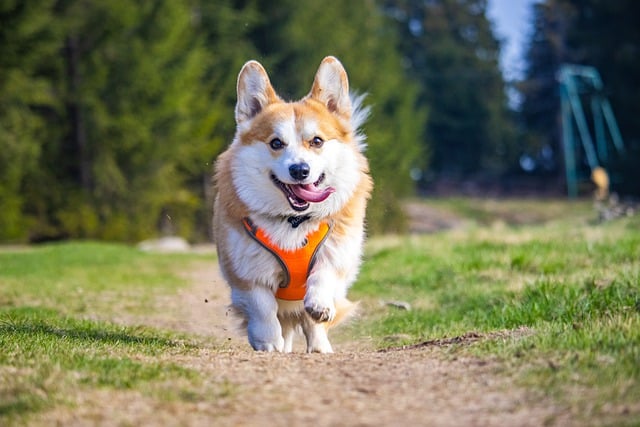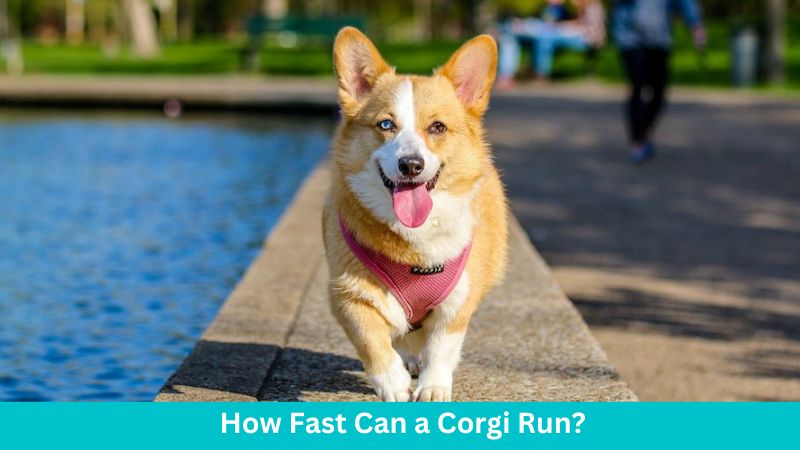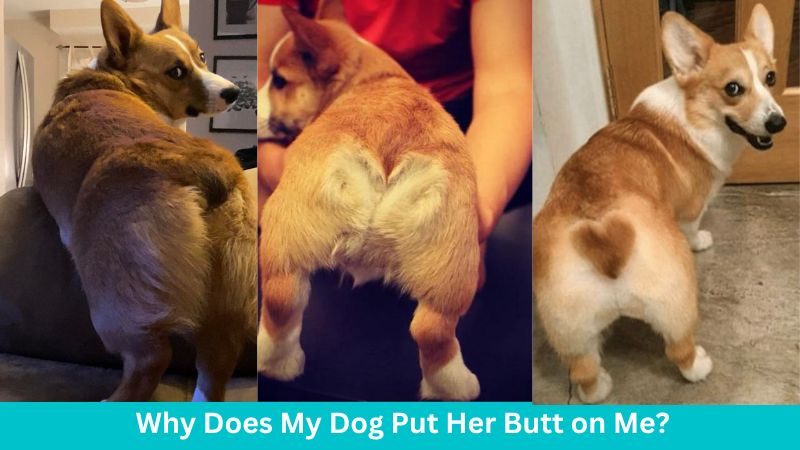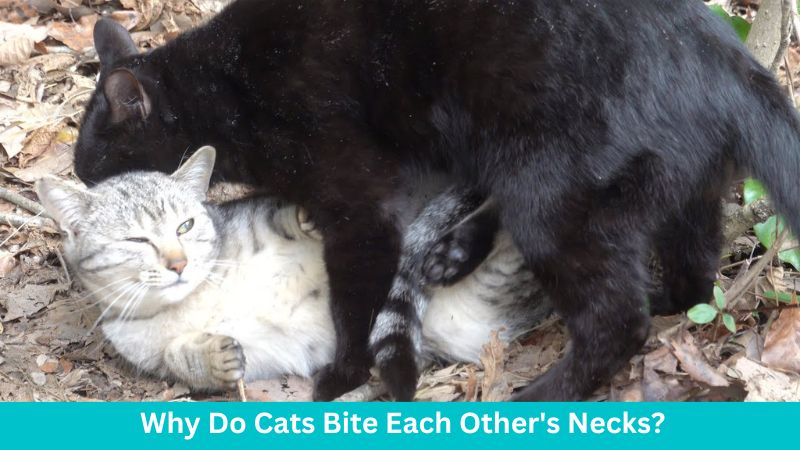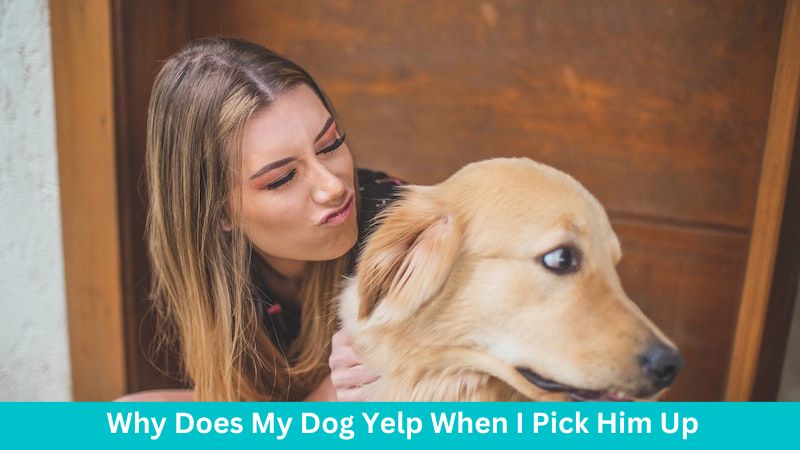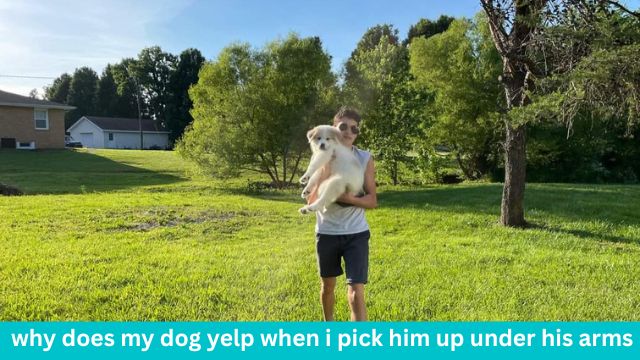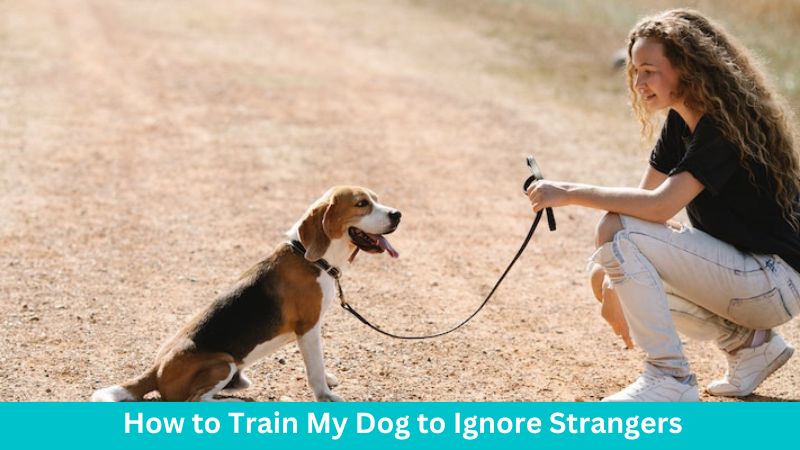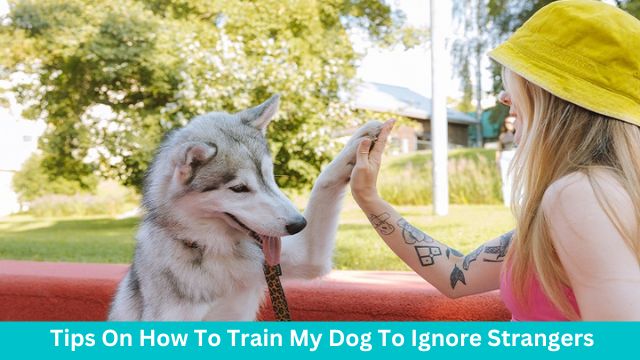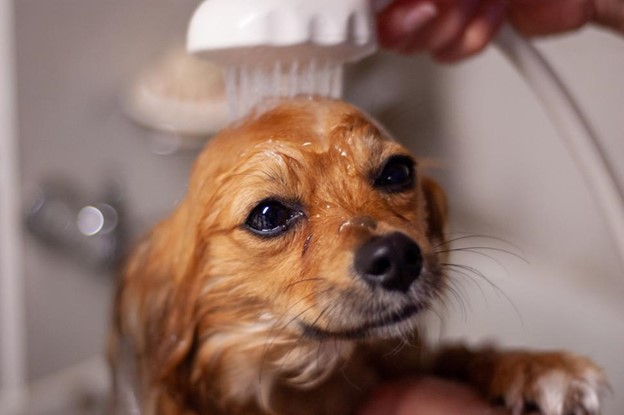Cats make great companions. Just like other pets, you need to buy several pet supplies to ensure that your cat is comfortable and enjoys the right facilities like best cat food and automatic cat feeders, among others. Investing in the best cat litter box can be a great idea to help you deal with messes. Cat litters provide a wide range of benefits ranging from hygiene, comfortable for the cat, and you don’t have to worry about forgetting to get rid of cat poop.
When you are selecting any cat litter box, the most important thing you should concentrate on is the ability to keep the odor away. After all, you don’t want to be ashamed when you have visitors an there is an unpleasant smell in your house. With a cat litter, you can be sure that the odor will be contained near the box because most of them have a carbon filter.
On top of that, you should consider picking a cat litter box that is comfortable for your cat. It if it’s small or hard for your cat to enter, then your cat might experience litter avoidance. So, make sure that you pick the right size that will keep you and your cat happy. Because cat litter boxes vary in terms of styles, designs, sizes, odor containment, and much more, you can experience a hard time picking the right one.
We have prepared this compressive guide to provide you with recommended cat litter boxes that you will love. We have reviewed different types of cat litter boxes so you can be sure to find the right one to suit your needs. Additionally, we have included a buying guide and a comparison to make your purchase easier and faster.
Read on to find more information.
Best Cat Litter Box Comparison Table
Top 10 Best Cat Litter Box Reviews of 2019
After doing extensive research, we were able to collect more information that will help you select the right cat litter box. This guide contains different types of cat litter boxes that are affordable and work well to contain odors. Depending on your requirements, you can be sure to find the right litter box that will match your needs.
The following are the different types that we will cover in this guide:
- Best Cat Litters for Odor Control
- Best Cat Litter for Multiple Cats
- Best Dust Free Cat Litters
- Best Flushable Cat Litter
- Best Clumping Cat Litter
- Best Pellet Cat Litter
- Best Non Tracking Cat Litter
Now, let us check each of these different types of cat litter boxes in details. We will also cover the best product recommendations for every category.
Best Cat Litters for Odor Control
Do you want to reduce odor when you are scooping?
Then you can consider in vesting in the best cat litter for odor control.
Read on to find the right cat litter that will suit your requirements.
1. StovePipeCat’s Awesome Almost Invisible Cat Litter


This is a high quality, high-density form of cat litter that is made so that a cat owner does not have to suffer the pungent smell of cat litter. Not only is this designed for the comfort of the cat owner but the convenience of the cat. The particles are unscented which most cats love, and they are sand-like so that they can feel like they are outdoors. The shape and size of these particles remain the same even after continued use.
The particles are dust-free so that your cat does not leave marks across the floor or carpet. It is easy to maintain and does not need turning continuously. It is also formulated to dry-up cat litter and neutralize the smell of both cat poop and urine so that your house does not smell. The particles are also super light and easy to clean out and replace.
Pros
- It is light and easy to maintain over some time.
- Dries up moisture from cat litter and urine to reduce the smell.
- It is dust-free to minimize tracking.
- The particles are sand-like for cat’s pleasure.
- It is unscented for the cat’s comfort.
Cons
- Not completely dust-free and thus cat might track it throughout the house.
2. FreshMAGIC Large Chunk Style Low-Dust Crystal Cat Litter


This cat litter comes from FreshMAGIC, a trusted brand in the cat litter business. It features large, chunky particles which have a non-smooth texture that does not roll out of the litter bin even when the cat plays in it. This design is also useful as it prevents the release of dust so that the cat does not trail it throughout the flooring.
The particles have an advanced modern technology that contains millions of tiny pores which drain the moisture out of cat litter and urine. This is good as it prevents the litter and urine from smelling even in one small apartment. The Large Chunk Cat Litter is also designed to last longer and remain fresh even after continued use. This is money-saving and desirable for cat users.
Pros
- Multiple cats can use it without affecting its quality.
- It does not stick to the walls of the litter bin for easy cleaning.
- It dries up stool even if it is watery.
- It is unscented so that it does not interfere with your house’s aroma.
- A chunky, irregular shape so that it does not roll out of the bin.
Cons
- The chunkiness might not be desirable for rolling around by a cat.
- Might have some dust due to movement during shipping.
3. Purina Tidy Cats Clumping Litter 4-in-1 Strength for Multiple Cats


This cat litter from Purina Tidy Cats is designed precisely to take care of the stubborn smell from cat stool and urine. It has a formula that neutralizes odor from cat stool and urine so that the littering area and the house remains smelling clean and fresh, even in smaller apartments. Furthermore, it clumps the mess from weaker stool so that it does not drain entirely into the particles and makes for easier cleaning.
The Clumping Litter is also designed to minimize dust, even when poured right after shipping. The particles are also designed to clump the stool to reduce the range of cleaning needed. It is formulated so that multiple cats can play in the particles without tracking it around the house and leaving a mess.
Pros
- Minimizes dust even after cats play in it.
- Neutralizes odor from cat stool and urine.
- Clumps even loose stool so that it is easy to clear out.
- Suitable for use even by multiple cats.
- Little tracking by a cat after walking on it.
Cons
- The packaging is a bucket which might be heavy to lift.
- Urine sticks to the walls of the litter box, making it harder to clean.
4. Tidy Cat Breeze Cat Refill Pads


Another product designed to take care of litter from Purina Tidy Cats is the Breeze Cat Refill Pads. These are pads innovatively designed to quickly absorb urine when a cat pees in the litter box. It keeps your litter box, and cat litter dry so that the cat can reuse it over and over. They are designed with a special technology that absorbs the urine deep into the pad so that it remains dry and the house remains fresh.
These cat pads last and are useful for up to a week. To further usage it can be turned around after one side is soiled and the house will not smell. And even though it is explicitly designed for urine, if the cat poops on it, it is easy to clean and can still be used afterward. They are easy to remove and dispose of.
Pros
- Easy to change and dispose.
- Made with technology to absorb urine to keep the surface dry.
- Keeps the house fresh as it absorbs the smell from urine and other waste.
- It is easy to clean even if a cat poops on it.
- It lasts long and can be reused for up to a week.
Cons
- Effective with the Breeze litter system which has to be purchased separately.
- A bit expensive.
5. Pack of 3 – World’s Best Cat Litter


This cat litter is designed for homes with up to 2 cats who will use the same litter box. The pellets are made with high-quality corn kernels which makes it highly absorbent, absorbing the urine and the odor effectively to keep your house fresh.
It is designed with a clumping technology that clumps any waste, both stool, and urine, including watery stools. The clumping makes the waste easy to clean. It is light and easy to turn it around to keep it fresh for your cat. It is also scented, with different types of scents so that you get to choose the kind of scent that suits your house’s needs.
Pros
- Made from high-quality material that works great as an absorbent.
- It is scented with natural scents to keep the house fresh.
- Contains a clumping technology that facilitates easy cleaning.
- It is light and easy to handle and clean.
- It is durable and dust-free.
Cons
- Might pack dust while in the packaging.
Best Cat Litter for Multiple Cats
If you have more than one cat, you need to change the litter box frequently because they pollute it fast. There are quality cat litters that are designed for multiple cats.
Check them out here to get the right one for you.
1. sWheat Scoop Premium+ All Natural Cat Litter


The sWheat cat litter is made out of natural plant extracts to enhance odor control. It is made out of a blend of natural herbs, including wheat that not only traps all the odor in the litter, but it also eliminates the smell. This is done through the Noble Ion Technology that neutralizes the ions that cause the smell in litter boxes, meaning you can come home to a fresh-smelling house even though you have not emptied the litter.
This cat litter also comes with another noticeable advantage, fast clumping. The sWheat company has come up with a technology that makes clumps form twice as fast as any other product in the market. The clumps, once formed, are very hard and therefore lock in all the smell and bacteria. The clumps do not break easily, which makes for easier cleaning.
The litter also comes with a bonus, it is Eco-friendly, since it is made out of 100% natural plant extracts and a renewable source, wheat. Since it is biodegradable, you can choose to compost the litter, see how the fact that it is odor-free allows you to do that too? If you are not one to compost litter, you have the alternative to flush it down the toilet.
Pros
- Renewable and eco-friendly materials.
- You can either flush or use the litter as compost
- Fast clumping and complete odor elimination
Cons
- A bit expensive
- Some complain it has a lot of dust
2. World’s Best Cat Litter, Scented Clumping Litter Formula for Multiple Cats


This cat litter is made out of corn kernels. The corn kernels have excellent absorbing properties that make it quick clumping as it traps the cat’s waste before it reaches the box making it easy to clean the litter without having to scrape.
It also comes with a lavender scent. Added to the fact that the litter is fast-clumping therefore trapping odor, it also comes with a lavender scent that works with the anti-bacterial properties of the corn to cover up the smell of the litter. It is also swipe activated so when your kitty is done and wipes their paws it activates the sweet-smelling lavender scent.
There is no tracking when using this litter because the kernels are dist free, ensuring that no dust will stick on the cat’s fur and easy breathing for you. It is also eco-friendly since it is made out of corn with no added chemicals.
Pros
- Completely dust-free
- Lightweight
- Biodegradable
Cons
- Easily overturned since it is lightweight
- A bit pricey
3. Arm & Hammer Multi-Cat Clump & Seal Clumping Litter
If you’re tired of cleaning the litter box every day because you can’t stand the smell this litter box is the one for you. It gives you a whole 7 days of an odor-free litter box. It has a special blend of granules that form a seal on the cat waste. It also has baking soda that destroys the odors that are sealed in giving you a whole seven days of freshness.
The granules also form rock hard clumps that are very easy to clean as they do not break easily when scooping. There is little tracking because of this property, ensuring that the litter does not stick on the cat’s fur or spreads around your home.
It is also dust-free ensuring no release of dust when pouring or scooping and it has a super soft feel to it that your cat will love.
Pros
- Dust-free
- Offers 7 days of freshness
- Soft feel
- Easy to clean
Cons
- New design doesn’t work as well as the old one
4. Fresh Step Premium Crystals
This litter uses silica gel crystals to absorb liquids in contact, leaving the litter box dry and odor-free. They are also long-lasting. This is because, during cleaning, the unused crystals fall back into the box, ensuring that you get more prolonged use from them.
These crystals are manufactured to minimize dust leaving your home and cat clean. They are soft to the touch, and your cats will love it. They are also lightweight making it easy to scoop and clean and make an easy job of changing the litter box.
The litter has a wonderful scent that isn’t overpowering and is loved by both cats and their owners. Sadly, the crystals are non-biodegradable and do not clump.
Pros
- The crystals absorb moisture
- Last longer than most litters
- Minimal dust release
- Lightweight for easy scooping and cleaning
- Lock odor five times than other litters
Cons
- The crystals may be hard on sensitive paws
- Is expensive
- Not all cats take to it
5. Fresh Step Extreme Scented Litter With Febreeze
If you completely hate the smell of cat urine and need to get rid of it, the fresh step extreme with the power of Febreeze is the one for you. This litter was specially formulated to deal with even the stinkiest litter box using the power of Febreeze. It has ammonia block technology that controls bacteria growth and stops the strong odor produced by cat urine and feces for up to 10 days. It has paw activated release, which means that the fresh mountain scent will be released every time a cat uses the litter.
It has clump lock technology which helps fight odors and locks in any liquid/moisture and forms clumps very quickly once used, making it easy to scoop and clean the box. For fresh smell, ensure to add a fresher step after every scoop.
The fresh step extreme was developed with a low dust formula that gives cleaner air and a cleaner house.
Pros
- Has excellent odor lock capabilities
- Gives up to ten days of freshness
- Paw activated to release fresh scent when used
- Has fast clumping capabilities
Cons
- Releases a bit of dust
- Some cats don’t like it
- It is expensive
Best Dust Free Cat Litters
Not all cat litters you find on the market are completely dust free. If you don’t want you or your cat to suffer from dust allergies, then you can consider getting the following dust-free cat litters.
1. Purina Tidy Cats Lightweight 24/7 Performance Clumping Cat Litter
This is one of the best cat litters, which offers lifetime usage in ensuring that your cat does not cause discomfort in your house. Nobody ever wants to stay in a house smelling cat’s urine. This is why you need to use this to avoid such smell in your home. It reduces the shame of friends finding your home smelling petty.
Moreover, this cat litter is very light hence, you will save time to set it. This cat litter offers a 24/7 performance at all times. The odor protection is too strong that it can handle more than one cat. It also has an easy clumping to ease the process of scooping for a quick clean up. With this, it improves the cleaning activities.
It neutralizes urine and that Ammonia odor from the cat waste product. To facilitate this, it has a TidyLock which helps to lock away odors. When it comes to blocking the ammonia odor, it has an ammonia blocker. This prevents the ammonia smell for at least two weeks.
Pros
- It offers a long usage in controlling odor.
- Easy to clean for it is dust-free.
- It can accommodate multiple cats for it is strong.
- With regular maintenance, it lasts long.
Cons
2.Oil-Dri Cat’s Pride Fresh and Light Premium Clumping Fragrance-Free Scoopable Cat Litter
How do you feel while in a room smell in a cat’s urine? You will not feel comfortable at all. You will not desire any of your friends to visit. This is currently not a big issue for you with this cat litter. It eliminates all the urine smell from the cat. Also, it is easy to dispose of it during the time of cleaning.
This cat litter is great because it absorbs all the odors. This leaves your home smelling fresh. With this, you will have a nice time with your pet. It will keep your home smelling good. You don’t have to use air fresheners in your home for clean and fresh air.
Therefore, a guarantee of nice time in the house. Furthermore, it has a dust-free feature that ensures your cat can breathe well and give you a clean house. Another fantastic thing about it is that it has no scents nor perfume. Thus, suitable for that sensitive cat.
Pros
- It is easy to carry due to its lightweight.
- Guarantees cleanliness of the house.
- Easy to dispose of it is dust-free.
- It is compatible and suitable for all cats for it not smelly.
Cons
- It cannot be used for multiple cats.
3. SmartCat All-Natural Clumping Litter
This is a great product manufactured by the Smart Cat Company. It is made from grass materials which ensure it is entirely biodegradable. This makes it friendly to both the cat and the environmental conservation programs because it absorbs urine it continues to harden the more.
This cat litter works well to eliminate bad smell. Additionally, the clumps make it easy to scoop. With this, the litter box is kept clean. As a result, it enhances the cleanliness of the cat and the house. It also has a lightweight to ensure it is easy to carry it.
The dust-free feature also goes a long way to keep out diseases and viruses. With this dust-free feature, your cat cannot suffer any respiratory illness. It is easy to carry, easy to clean it up and easy to dispose of.
Pros
- It is easily biodegradable hence environment-friendly.
- It offers no harm for it is chemical-free.
- Made from strong light materials.
- It is easy to carry it due to its lightweight
- Comfortable for cats.
Cons
- It needs to be regularly cleaned up.
4.Arm and Hammer Multi-cat Litter, 40 lbs.
The Arm and Hammer Multi-cat Litter has a superior odor control clumping litter. This has a very high standard of cleanliness. If you have always found the cleaning activities for your cat’s waste product tiresome, then this one is a great deal for you.
It also offers a wide range of sizes to choose from. So, you will never miss the right size for you. It is also a dust-free cat litter hence easing the rate of cleaning activity.
Additionally, it has a scent refresher every time your cat uses the litter box. Unlike others, this one will let you remove the source of odors for disposal purposes easily. No matter how many cats you have, it still can eliminate the odors.
Pros
- Can accommodate more than one cat.
- Clumps very well for disposal.
- Keeps the house clean for it is dust-free.
Cons
- If not correctly maintained, it might be challenging to clump.
5.Ever Clean Extra Strength Cat Litter, Unscented
Just as the name suggests, this cat litter is usually easy to clean up. With this cat liters, the smell in the house will be a thing of the past. These litters usually grab and eliminate any sought of urine to keep your home smelling fresh.
It bounded with carbon and mixed with litter granules. This is the one responsible for absorbing the urine. It also has long lifespan meaning that you will use it for some time before you dispose of it.
On top of that, the litter has an antimicrobial agent that inhibits the growth of bacteria from odors. It has an extra feature of being dust-free. This feature helps to keep your litter box and home clean.
Pros
- Keeps your home smelling nice.
- Safe for it is bacteria-free.
- It is ever easily cleanable.
- Long-lasting home use.
- Saves time used to dispose of it.
Cons
Best Flushable Cat Litter
When you have an indoor cat, you need to keep the litter box always. To make your work easier, you can choose flushable cat litter that is bio-degradable and septic-safe.
Here are top recommendations to choose.
1.Garfield Cat Litters All Natural
This cat litter is a product by the Garfield Company. It is made from natural materials that have no harm to your cat. This feature additionally makes it biodegradable. Also, it is easy to clump; this makes it easy to remove the waste for disposal.
Moreover, this cat litter is flushable hence making it easy to dispose of it without any environmental effects. It is a perfect suit whether you have one cat or many of them. This is because it has no fragrance nor chemicals hence can accommodate multiple cats.
Furthermore, this cat litter eliminates all the odors from the cat completely. This litter is also made to prioritize the removal and elimination of any dust. As you understand the health of your cat is an important consideration. This ensures your cat does not suffer from any respiratory problems.
Pros
- Makes your home smell good.
- It is bacteria-free.
- Offers a long-lasting home use.
- Saves time used to dispose of it.
Cons
2.World’s Best Cat Litter Multiple Cat Clumping Formula
This cat litter features natural material so there are no chemical materials that can affect your cat. This makes it friendly for your cat at all times. With this, it also assures environmental conservation because it is biodegradable.
It uses a naturally absorbent whole-kernel corn which offers full odor control. Furthermore, it makes it very easy to scoop when you want to dispose of it. They are dust-free and have a concentrated power to deliver long-lasting performance.
Besides, it is made to suit multiple cats. If you are a person with many cats, you have no fear about it. This cat litter is very beneficial to offer comfort in the house and for the cat. It has outstanding odor control, easy to scoop, and also quick clumping ability.
Pros
- An easy Litter to handle.
- Offers prevention from a funny odor.
- Easily flushable and easy to clean.
- It is environmentally friendly.
- Economical for it can handle more than one cat.
Cons
- Not suitable for wet places.
3.Naturally Fresh Cat Litter.
This is a quick clumping brand of cat litter it is hence easy to scoop the waste when you are cleaning. When it comes to disposing of it easily flushable. This makes it not to have contact with people or even the environment. This boost the hygienic standards in a great way.
Naturally, Fresh cat Litter is unscented to ensure there is no smell or fragrances that are in the house. It is made with the quality feature which provides it has extra control to odors from the cat. Through this, the smell from urine, ammonia, and solid waste is limited.
Chemicals are very corrosive not only to humans but also to cats. Due to this reason, this cat litter is made from natural materials that are free from chemicals. As a result, you have no fear of your cat’s health because the natural materials are biodegradable.
Pros
- Offers long-lasting usage.
- Chemical-free.
- Has no environmental effects for it is biodegradable.
- A great eliminator for odors.
Cons
- Requires regular cleaning
4. sWheat Scoop Multi-Cat All-Natural Clumping Cat Litter
If you are looking for a cat litter that is suitable for multiple cats, the one which is easy to scoop. Then look no more for sWheat Scoop is here for you. This cat litter is made to be used for multiple cats and no matter the waist size it is easy to scoop it for it clumps easily.
It is made from naturally renewable wheat. This ensures there are no traces of harmful ingredients in it. As a result, it is easily biodegradable and has zero environmental effects. The natural wheat enzymes neutralize the odor to ensure no leakage of the bad smell.
Besides that, it has no added dyes or perfumes. This is because the manufacturers understand that the smell is usually unpleasant. In as much as you want your cat to be in the house, it is essential to prioritize your comfort also. Hence this is a great choice.
Pros
- It is easy to handle it.
- Prevents funny smell in the surrounding.
- It is flushable for disposal.
- Economical for it can handle more than one cat
Cons
- It is for use in wet places.
5.Weruva Its Tea Potty! Hinoki wood & Green Tea Natural Cat Litter.
It is one of the best cat litters made from Hinoki wood and green tea. All these are natural materials that do not affect the cat’s health at all. These materials are highly biodegradable. This ensures they decompose when disposed of hence have no harm to the soil.
Litter boxes are usually prom to the growth of bacteria and germs. But when you use his cat litter, it suppresses bacteria and odor naturally in a very efficient way. The Weruva Company who are the manufacturers have ensured there is no compromising.
Additionally, it is flushable and speedy in clumping and hence making it easy to dispose and clean the waste. A Super low dust-free feature is also a key advantage. You don’t have to worry about the cat suffering from respiratory diseases. The brand has stood to be the best for ages. Hence you have nothing to lose about it.
Pros
- Free from chemicals.
- It is fully biodegradable.
- It can be flushed when disposing off.
- Assure long term usage with no complications.
- Made from healthy natural ingredients.
Cons
- Gets destroyed when exposed to water.
Best Clumping Cat Litter
Using clumping cat litter can be a great idea because it is easy to scoop and it also prevents litter wastage. If you are wondering which the best clamping cat litter is, I have some top picks for you.
1.Dr. Elsey’s Ultra-Premium Clumping Cat Litter
Dr. Elsey’s Ultra-Premium Clumping Cat Litter is one of the best cat litters about clumping ability. Thus, it becomes easy to clean and dispose of waste materials. This cat litter is additionally, made up of a superior odor control feature. This ensures that a funny urine smell from the cat does not pollute the air.
This is an exceptional product made from all-natural clay material. It has medium size particles and texture to suit your cat’s preference is dust-free uniquely designed to prevent respiratory problems, and it has no adverse reaction with cats
It clumps easily when the cat finishes its business and becomes hard like concrete mass. The clumps can be scooped quickly and easily disposable. Due to the easy formation of clamps, the litter box is easy to clean.
The cat litter neutralizes any scents and removes any bad odors on the litter box. It is specially formulated with a natural herb attractant that attracts cats who do not like to use the litter box.It is unscented, contains no artificial scents which might repel cats with smell sensitivity and a soft feel on the cat’s paws, which means it will not harm the sensitive skin and has non-tracking features.
Also, this cat litter is made to be dust-free. This reduces respiratory problems to the cat. It also ensures that you do not have a hard time while cleaning. This cat litter is also made from natural materials. They protect the cat from toxic or chemical substances that might be harmful. These materials are also biodegradable have no Environmental effect.
Furthermore, this cat litter is useable for multiple cats. It can be used by many cats and will still offer great results in the long run. This makes it economical for those who have many cats. The clumping feature also ensures that moisture does not get to the ground. It is also very light hence, easy to carry it.
Pros
- Easy to handle it.
- Prevents funny smell in the surrounding.
- It is easy to clean.
- Environmental Friendly.
- Economical for it can handle more than one cat.
- Dust-free.
- Clumps easily.
- No scents produced.
Cons
- It is not flushable.
- Substandard packaging.
- Sticky when wet.
It is made very heavy in weight, minimizing the chances of your cat carrying it around and trailing the dirt all over the house. It also has large granules which suit your cat preferences. This prevents clumps from breaking down hence reducing tracking, making it very easy to clean. It also has a high absorbent rate, this absorbs all the urine first, and the liquid from the cat’s solid waste leaving little free of mud, therefore, no mess and does not make the cat dirty.
Pros
- Good control of odor
- Strong Clumping
- Zero Dust
- Non-Sticky
- Affordable
- Hypoallergenic
Cons
2.Purina Tidy Cats with Glade Tough Odor Solutions Clear Springs Clumping Cat Litter.
The clumps of this cat litter are just very wonderfully made to offer great performance. It comes with an excellent odor solution to end that bad smell from the cat’s waste. It has a good clumping feature which gives you a pleasant time while cleaning and disposing of.
This cat litter comes with a useful TidyLock Technology that helps to neutralize urine, Ammonia, and other waste. It helps to keep the litter box smelling pleasant. On top of that, it keeps it clean at all times.
The litter has robust and tight clumps to ensure simple maintenance. It is formulated to handle multiple cats, which is advantageous if you have more than one cat. Additionally, it can lock in moisture to avoid that smell from leaking.
Pros
- It offers an extended usage in controlling odor.
- Easy to clean for it is dust-free.
- It can accommodate multiple cats.
- With regular maintenance, it lasts long.
Cons
3. Feline Pine Cat Litter
When you are buying a cat litter, you will need to get one which cannot harm your cat. This is why Feline Pine Cat Litter is the best option you can choose. Unlike other cat litters made from chemicals which might be dangerous, this one is made from 100% natural pine materials.
Because of the material, it is made from it is readily biodegradable hence no environmental effect. It absorbs urine and Ammonia at a high rate. This is because it contains tiny pine fibers to absorb the liquids.
It also has a feature to lock up odors from the urine. This is especially Ammonia, which, as you are aware, smells very bad. The litter box is also easy to clean. It is very friendly to cats and is very soft for the comfort of the cat.
Pros
- It is easy to carry and move.
- Ensures a clean house.
- Easy to dispose of it is dust-free.
- It is an Environmental Friendly.
Cons
- It cannot be used for multiple cats.
- It is not flushable.
4. Fresh Step Extreme Clay, Non-Clumping Cat Litter, Scented.
This cat litter is also among the best clumping cat litters. A weight of 21 pounds makes it be light. This is very important to ensure you do not have a burden in carrying it from one place to another. It also comes with an antimicrobial feature to ensure there is no growth of bacteria.
It has carbon components to neutralize odors from the cat. This carbon is also important in eliminating and trapping odors and moisture. This ensures there is no unusual smell of urine within the house.
Furthermore, it has clay which absorbs and traps odors at a rapid rate. It is usually so fast that you cannot realize it. When the litter box is used up, it’s easy to dispose of it. Because of its harmless and chemical-free state, you can dispose of it like any other waste.
Pros
- Easily biodegradable hence environment-friendly.
- Does not support bacteria growth.
- Has harm for it is chemical-free.
- Easy to carry it due to its lightweight
- It offers an excellent odor solution.
Cons
5. Ultra Pet Ultra Cat Litter
This is a brand of cat liters branded and manufactured by Ultrapet Company. This cat litter offers an excellent spend for the pocket at all times. It quickly eliminates the odor with its maximum odor control feature fitted in it. Besides, it is soft on cat’s paws hence does not affect its comfort.
It comes with an absorptive surface mini-channels for liquid waste absorption like urine and Ammonia. Moreover, it dries the solid waste from the cat to eliminate odors that are usually active in the waste id wet.
The cat litter is made to be dust-free. This makes the activities of cleaning to be very simple at all times. Just as the name suggests it ensure your cat is well taken care of. Cleaning waste is also simplified massively.
Pros
- Keeps homes smelling nice
- Safe to use.
- Easy to clean and dispose of.
- It has long durability home use.
- Easy to dispose of, mainly due to drying ability.
Cons
- It is expensive to purchase it.
Best Pellet Cat Litter
This is cat litter that is made from recycled and biodegradable materials. The litter is environment-friendly, low tracking and more absorbent as compared to clay. It also comes at a high price but it is worth your investment. Check out the top picks on the market today.
1. Blue Naturally Fresh Pellet Litter
Blue naturally fresh pellet litters are very easy to use with perfect odor control and high ability of urinal absorbers. Considering they are reusable, there is no need to change the litter since it’s easy to clean and long-lasting. They are entirely made from walnuts shell, which is a natural material and as a result are biodegradable, making them environmentally friendly to people and also animals. It is also safe to flush down the toilet.
This cat litter comes with a range of numerous varieties for customers to choose from. Some are coarse, while others are fine in texture. Some cats like the coarser one while others like the finely textured one. Veterans too, can recommend the use of a pellet litter with certain textures due to allergic reasons to a cat.
Many cats love the blue naturally fresh pellet litter because it’s more comfortable and unlike others which make the cat to sneeze a lot. It produces no dust, so it’s safer for cats, especially those with health problems like; urinary, eye and respiratory infections, and you will like the way it enhances your hygiene and tidiness.
Pros
- Excellent odor control
- Dust-free system
- Superb absorption system
- It is flushable
- Minimal tracking
- Mild on cat’s fur and claws.
- Environmentally friendly
Cons
- Does not clump.
- Stains the white toilets
2. Dr. Elsey’s Ultra-Premium Clumping Cat Litter
If you are looking for an affordable cat litter, you must try this. You will no longer worry about clouds of dust in the house when pouring the litter in a cat container or sneezing of the cat. It is made from sodium bentonite clay which boosts its clumping ability.
This type of cat litter is ideal, especially if you have a busy schedule since cats adapt to it fast enough. It is made out natural materials, therefore, having zero effects even to the most sensitive cats. The litter does not need frequent change keeps the house completely out of bad smell coming from cat’s solid waste and urine, and it does not have any perfume in case your cat is allergic to strong scents.
It is made very heavy in weight, minimizing the chances of your cat carrying it around and trailing the dirt all over the house. It also has large granules which suit your cat preferences. This prevents clumps from breaking down hence reducing tracking, making it very easy to clean. It also has a high absorbent rate, this absorbs all the urine first, and the liquid from the cat’s solid waste leaving little free of mud, therefore, no mess and does not make the cat dirty.
Pros
- Good control of odor
- Strong Clumping
- Zero Dust
- Non-Sticky
- Affordable
- Hypoallergenic
Cons
3.Trackless-Litter Pearls Cat
Trackless litter pearls is the best litter, especially if you have a naughty cat that won’t stop carrying the litter box around. It is heavy and also made in a way that it limits the quantity of litter sticking to your cat’s pads when he gets out of the box hence minimizing the chances of tracking. What’s more interesting is that you can buy without breaking your bank.
This type of cat litter is the best for indoors cat keeping. It leaves no mess and is very neat. It has a very superior stench control ability made possible by the silica gel crystals. They work well in absorbing urine and moisture from cat feces at a very high rate compared to other cat litters. The moisture is vaporized immediately leaving it dry. The litter has no strong perfume in case you or your cat is bothered by strong scents.
The shape of the pearls are large and irregularly shaped to reduce the issue of them rolling out of the box when cat steps on them. These cat litters is also dust-free. The cat litter can be reused for a period of up to two months, saving you the time and energy to change it. I dare say it’s the easiest cat litter to maintain.
Pros
- Perfect control of odor
- Does not track
- It is dust-free
- Highly absorbent
- Mild on cat’s paws
Cons
- The crystals are sharp and may injure the cat’s paws.
- No clumping
4.Natures Miracle Natural Clumping
Are you or your cat allergic to some types of cat litter?
If so, try the Natural Miracle Natural clumping is 99.9 percent dust-free solving the problem of nose irritation when pouring litter into a box. The package is made with a handle to help in transferring the litter into the box. You don’t have to scrub or wash the litter, and you can dispose it of by flushing. It’s 40 percent lighter than other cat litters made of clay this characteristic makes it easy to replace and clean the litter.
It is made by natural ingredients that are entirely safe for both your cat and the environment. The material made of soft natural fibers that are very gentle on cat’s paws and fur and the cats love it. Cleaning is easy since the litter is free of clay. Scooping the clumps off the litter is uncomplicated too!
Most of the fantastic functions of this cat litter are its clumping technique. The clumping also curbs the odor of the cat’s waste, leaving it fresh and out of bad smell for about seven days. The ability of clumping first helps in reducing the stickiness of cat litter and a total mess and easy to clean up. Another factor that’s aids in the masking of odor is the bio enzymes which kill the smell of urine and solid waste of the cat upon their touching the litter.
Pros
- Clumps tight and fast
- Environmentally friendly
- Easy to clean
- Odor control
- Easy to lift
- 99 percent dust-free
- Attentive packaging
Cons
Best Non Tracking Cat Litter
Get the best non-tracking cat litter that provides superior clumping power and odor protection. This cat litter helps you maintain a clean home because it also prevents other cats from tracking the litter from the litter box and spreading it on your floors. If you are considering this type of cat litter, check out these products below.
1. PetSafe ScoopFree Premium Crystal Non-Clumping Cat Litter, 2-Pack
When it comes to the best cat litters, some products perform well than others in odor control. This non-clumping cat litter works well as compared to the traditional models because it gives you five times more odor control. It can absorb liquids and dries solid waste perfectly. Additionally, you don’t have to worry about allergies because it is dust-free and ensures you have fresh air in your house.
Another thing that you will appreciate is that it is non-tracking. This means the crystals remain in the box so no messes on your floors. This cat litter is also lightweight, which eliminates the need for lifting heavy bags or litter tubs.
Cat owners also love the fact that it is compatible with all litter boxes. When you buy the litter, you will also get two pre-portioned bags of crystal litter that have a pleasant scent.
Pros
- Works well with litter control
- It is lightweight and easy to clean
- Cat litter is non-tracking
- Perfect odor control
- It is dust-free
Cons
- Doesn’t stay more than a month
2. World’s best cat litter clumping formula
This cat litter is specially formulated to ensure that the litter box smells fresh. The smell is immediately trapped by the litter leaving it odor free meaning you can spare your litter box from the foul smell. It is made of natural compressed corn formula that is dust-free, meaning your family can breathe freely, free from respiratory infections.
The corn in the litter is naturally-absorbent, and it can trap waste before it reaches the bottom of the box. It clumps quickly making cleaning of the box simple and the clumping assists in odor control. You need to ensure you scoop the cat’s ‘business’ quickly because otherwise it will dry up and crumble.
It is a dust-free litter, and unlike other products, this one delivers on its promise as it releases absolutely no dust when pouring or scooping. It is also lightweight meaning you can handle the whole thing yourself instead of asking for help. Other good news about this kitty litter is that it is environmentally friendly. You can choose to keep it as compost as it is biodegradable or you can choose to flush it down the toilet, and it won’t stick.
This particular litter does not contain any strong-smelling perfumes. Most litters are strongly scented, and this does not sit well with the cats. World’s best litter, however, does not have any artificial smell because of the fast clumping which locks away any odor. This litter lasts for a long time, and it can go for this whole time without any disgusting odors.
Pros
- Clumps easily
- Locks away odor
- Can be easily disposed
- Environmentally friendly
- Is lightweight
Cons
- It is expensive
- Sometimes it does not entirely lock away odor calling for frequent cleaning of the litter box
3. Arm And Hammer Clump And Seal Platinum Litter
This one of a kind litter is specially made to seal and destroy odor. It is made with moisture-activated micro-granules that immediately seals any moisture once the litter is used destroying both liquid and solid wastes instantly, and has baking soda which kills the odors upon contact leaving your house smelling fresh and clean for up to 7 days.
It has medium-sized particles that are dust-free, meaning your floors will remain clean even after pouring or scooping. The particles have a soft feel on the cat’s paws. The litter also forms rock-hard clumps. These clumps reduce tracking, so the litter stays where it needs to be and not scattered around your home. For better results, remove the clumps daily to keep the litter fresh. Add fresh Arm and Hammer Clump and Seal to about 4 inches to replace what you have scooped out and more refreshing smell.
It is relatively lighter than other litters, but it provides the same uses per box so you can use it with multiple cats. Its lightweight also makes for easy to carry and pour the litter. It also makes for sufficient storage.Remember to always wash your hands after handling to remove the harmful agent found in cat feces.
Pros
- Guaranteed 7 days freshness
- Quick forming and hard clumps that trap odor
- Dust-free
- Lightweight
Cons
- Does not form clumps as quickly as other products
- Smelly litter
4.Purina Yesterday’s News Unscented Paper Cat Litter
Purina, one of the biggest names in pet products, brings about yet another groundbreaking litter. This litter has amazing liquid absorption properties. This helps you use less litter per day, elongating the use of the litter. It features recycled paper; therefore, it is environmentally friendly. These soft paper pellets are gentle to the cat’s paws allowing the cat to dig into the litter with comfort.
It offers natural, effective odor control. It also has no added fragrances which sometimes repulse cats and so makes it cat-friendly. If the pellets can submerge around the feces, then it can completely lock away the smell, but if you expose the waste to the air, then the litter might stink.
Since it is made of recycled paper, it is 99% dust-free making it suitable for even asthmatic cats and leaves your home cleaner for longer. It is also non-tracking meaning no residue will stay on your cat’s fur and therefore will not be spread in your house.
It is not intended to clump. However, the moisture in the cat’s waste will attract the paper pieces to each other, forming a semi-hard mass. Urine breaks down the clumps into sawdust resembling pieces.
Pros
- Made out of recycled paper so is eco-friendly
- Absorbs up to three times the moisture
- Low tracking
- Unscented so can be used by all cats
- Dust-free
Cons
- Cleaning up is messy since it does not clump
- Gets soggy and overwhelmed by too much urine
How to Choose the Best Cat Litter Box
There are several things that you need to do when you have pets. Apart from providing them with the right food or cleaning pet bowl, you should also be concerned about their bathroom issues. So, if you want to get the best cat litter box, we have covered some crucial tips that will help you select the right one.
Type of Litter Box
Currently, there is a wide variety of litter boxes for cats that are available in the market for cat owners. These litter boxes of different types vary from each other in terms of size, shape, and available colors. Some of the basic types include the disposable box, hidden litter box top entry, and self-cleaning litter box only to mention but a few. In the next steps, we are going to guide you on how to select the best type for your cat.
Size of the Cat
The size of your cat determines the size of the box you buy for it. For example, you cannot buy a smaller litter box when you have a big cat or a big litter box for a small cat. A little kitten will require a smaller litter box where it can get into with ease; therefore, you need to choose a litter box of the right size for your cat.
A common thumb rule for selecting a litter box of the right size is length-dependent. The width of the box should be equal to the cat’s length, whereas the length of the litter box should be one and a half times the length of the cat. This ensures the cat has sufficient space for maneuvering and burying the waste.
Number of Cats
There are households with several cats. In such homes, you need more than one litter box. A thumb rule for this is that a maximum of two cats should use one litter box. Ideally, one cat designated for one box would be best though it is often not possible because of limited space in most households.
In case you own more than a single cat, it is advisable that you go for a larger litter box. If you end up buying a smaller litter box for use by more than one cat, the rate at which it becomes dirty is more than your cleaning ability. This may make the cat look for other places to excrete their waste.
Placement Position of the Box
As a cat owner, there some elements you need to take into consideration where to place the litter box. Cats, just like humans, require disclosure; therefore, you should not place the litter box in the passageway with much traffic.
You should not place the litter box in one place because your cat might reject using the litter box and go somewhere else. The best litter box to buy should be the one compatible with your household and efficiently movable.
Ease of Cleaning the Litter Box
To buy a litter box, the cat owners also have to consider the fact that cleanness is vital. As a cat owner, it is advisable that you should go for a litter box which is easy to clean and access. There are a variety of these boxes that can either be self-cleaning, whereas others need manual cleaning.
The Tendency of Cleaning the Litter Box
Excretion is a normal biological process that occurs from day to day in a living organism. In as much as you remove the poop each day, the litter box needs daily cleaning. If cleaning makes you uncomfortable, it is advisable that the best choice for you is the self-cleaning litter box.
Disposal of the Cat’s Used Litter
You need to replace your cat’s litter box after a couple of weeks. To most cat owners, it is not always a pleasurable exercise; therefore, at this point, the best choice to go for is the self-cleaner. On the other hand, a disposable litter box can be a better option for the cat owners with the intentions of traveling with their cats.
People living in hurricane-prone areas usually keep several throwaway boxes in their travel boxes. As a result, they have to take off with the pets, thus will have things they require and do not have to carry the used box.
The Cost of the Litter Box
Different litter boxes range in prices from a few dollars to some hundreds. Not all of us can afford any other litter box. According to the price range, the depth of your pocket is the ultimate determinant of the litter box you can buy.
Current Trend
One of the latest options for litter boxes is furniture. An example of this furniture litter box includes the faux dollhouse which has the litter pan housed in it. For the cat owners with less space or the ones who are in need to avoid the sight of the litter box, this choice of the litter box is a better option to go for.
Your Presence or Absence from Home
Are you available around your household all the time, or are you an away person? This is a factor to consider as a cat owner. Your cat depends on you concerning the cleaning of its litter box. Being away from home or around gives you the final judgment on the choice of a litter box to buy based on the time you spend cleaning the litter and the duration the box can stay clean when you are away. In case you are an away-individual the best litter box you should opt for is a size able self-cleaning litter box.
Final Words
No one likes the smell of urine, especially cat urine. If you want to enjoy a fresh smelling house, then you need to get the best cat litter box. By now, you understand the importance of having a litter box. Not only is it comfortable for your cat but also contains the odor and prevents it from spreading all over the house.
After checking our detailed guide and buying tips, I believe you will face a hard time selecting the most suitable cat litter box. We exhausted all the different types that are available on the market so you can be sure to find the right one. Make a comparison and the right product that meets your needs and those of your pet.
